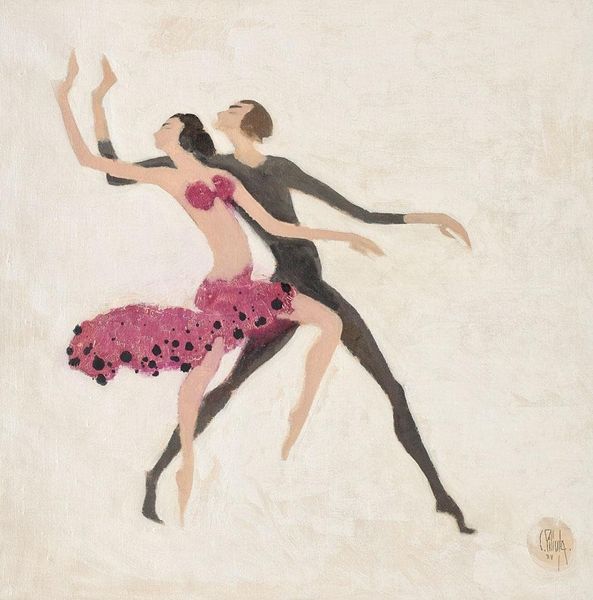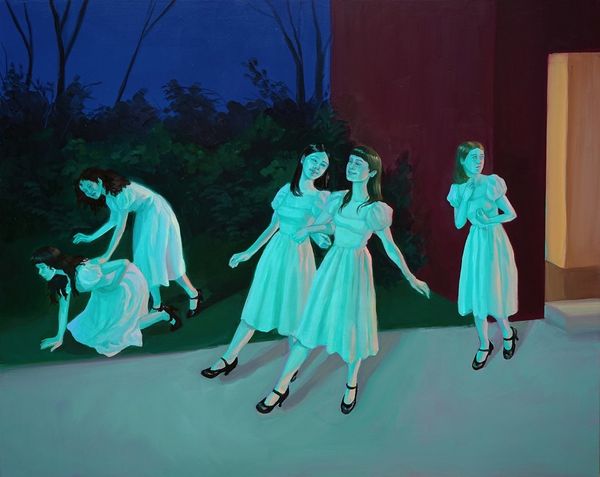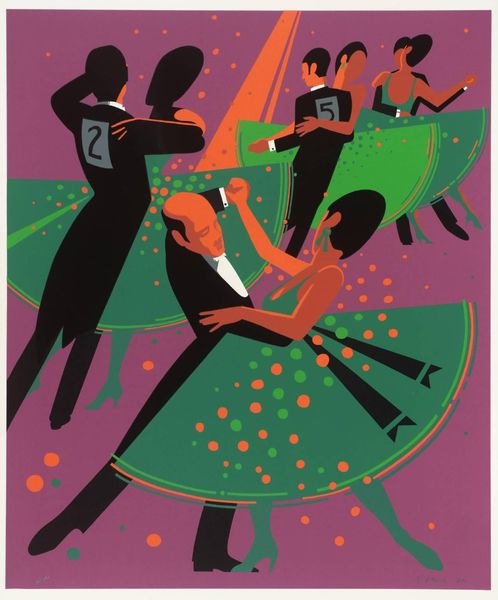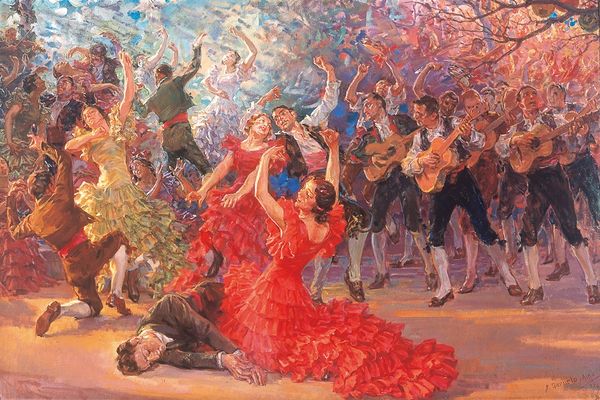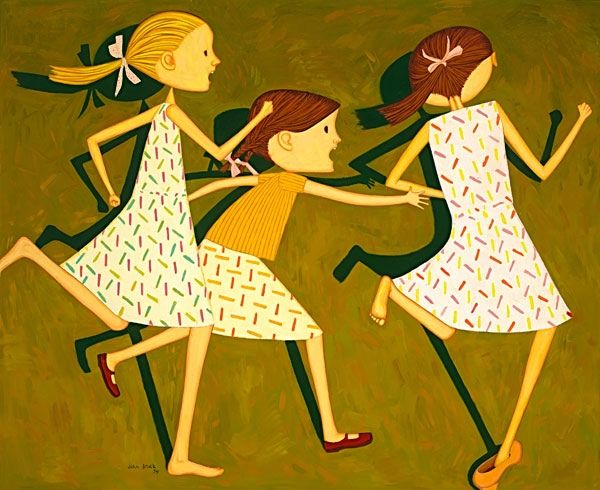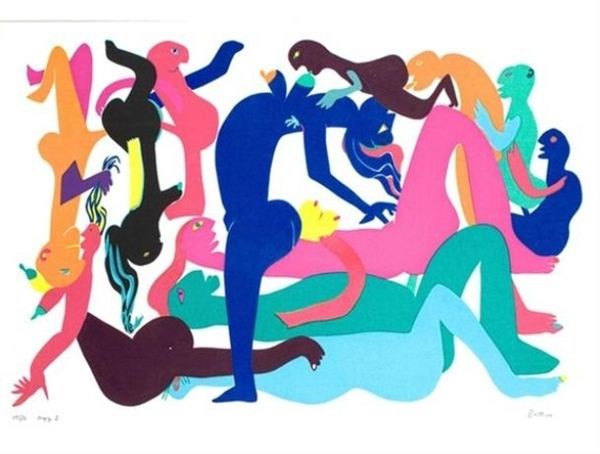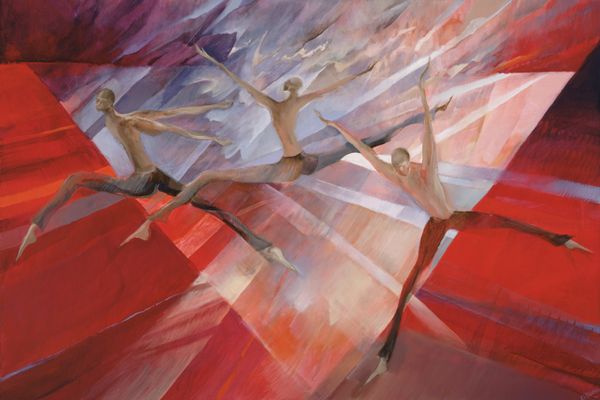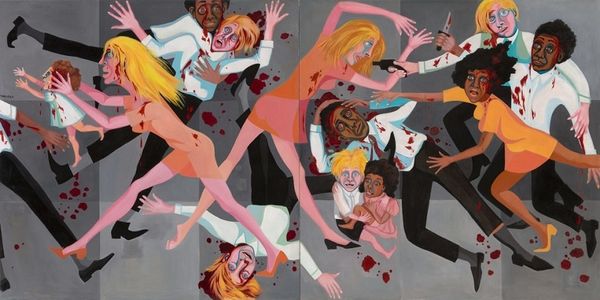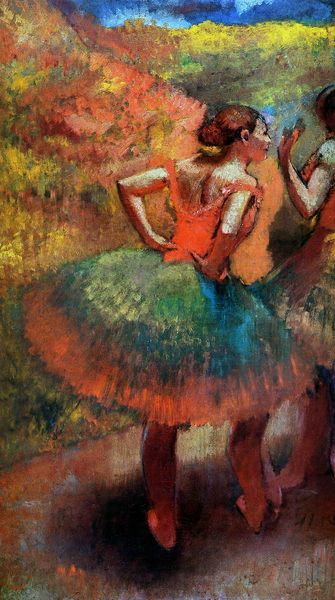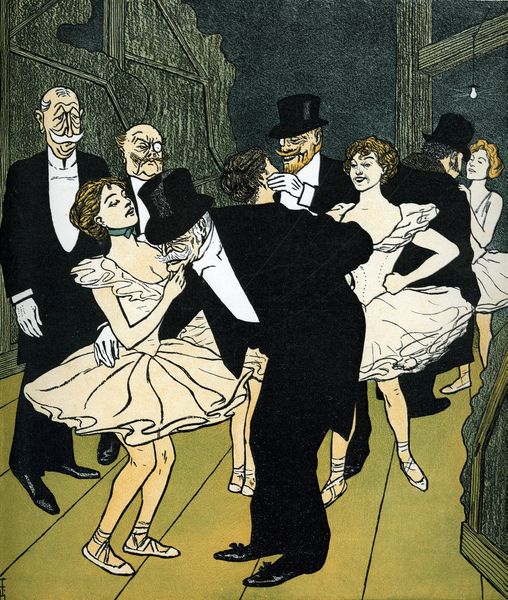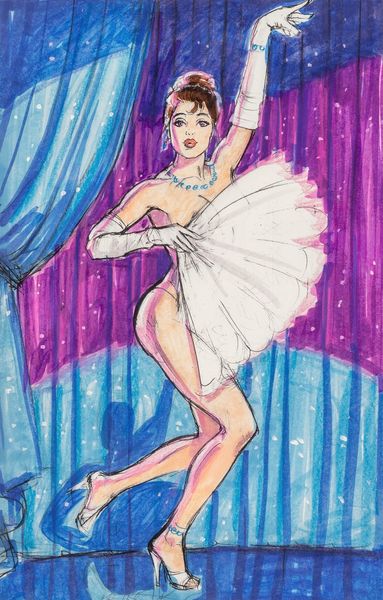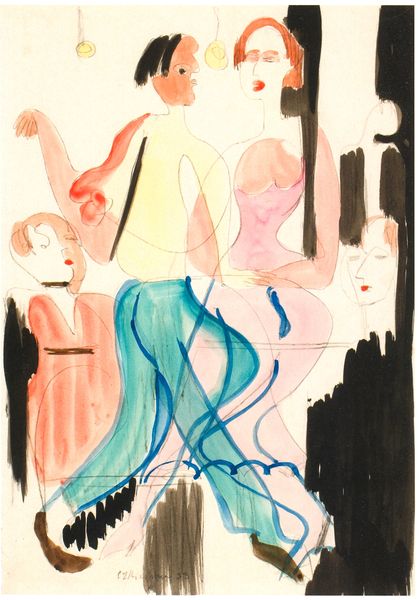
painting, acrylic-paint, ink
#
pop art-esque
#
painting
#
graffiti art
#
pop art
#
acrylic-paint
#
figuration
#
ink
#
pop-art
#
cityscape
#
genre-painting
Copyright: John Brack,Fair Use
Curator: John Brack’s "Latin American Grand Final," created in 1969, presents an intriguing scene executed with acrylic and ink. What strikes you immediately? Editor: There's something unsettling about this work; the figures, all sharp angles and bold colors set against this very vivid red, feel both familiar and distant, like characters performing in a play. It has a quality I associate with some of the more unsettling images of consumer culture... a feeling of hollowness. Curator: Absolutely. Brack often engaged with themes of social commentary through his art. Consider the materials: acrylic providing those flat, uniform color fields, the precise linework from the ink outlining these rather dehumanized forms. The dancers seem almost manufactured, their emotions subdued despite the vivacity of the scene. Editor: Manufactured... yes. And it comes across even in the very subtle numbers that we see on some of their jackets. What can we infer, sociologically, about such portrayals in Australia during the late '60s? Does it challenge notions of performative class? How might the construction of gender roles during this period inform his choices here, given how the women’s attire contrasts against the uniform austerity of the men? Curator: He was definitely interested in systems, Brack was. It's interesting to analyze Brack’s processes too. The flattening of the figures and the stark rendering seem deliberately devoid of any sense of tactility. The social context is unavoidable, but how he built up this image speaks to how much of this artwork’s success is how those concepts get communicated. Editor: Do you feel that flattening or that near-anonymity serves to elevate them or somehow deny them some aspect of selfhood, of individual worth? Does it democratize the depiction or make the painting, on some level, an unwitting agent in cultural criticism? Curator: Those ideas are fascinating, though what resonates with me the most is thinking about how this flattening reduces them to mere cogs in a larger performance, underscoring a sort of detached social ritual that can happen within a cultural form like competitive dance. Editor: And that, for me, circles back to the era of mass production and consumerism it seems to represent on the surface. These dance rituals—they echo social norms in some truly eerie, hyper-real, yet somewhat dehumanized way. I'm compelled to dive deeper into the undercurrents here. Curator: And there's plenty of food for thought in Brack’s particular blend of process, materials and social awareness, don’t you agree?
Comments
No comments
Be the first to comment and join the conversation on the ultimate creative platform.
